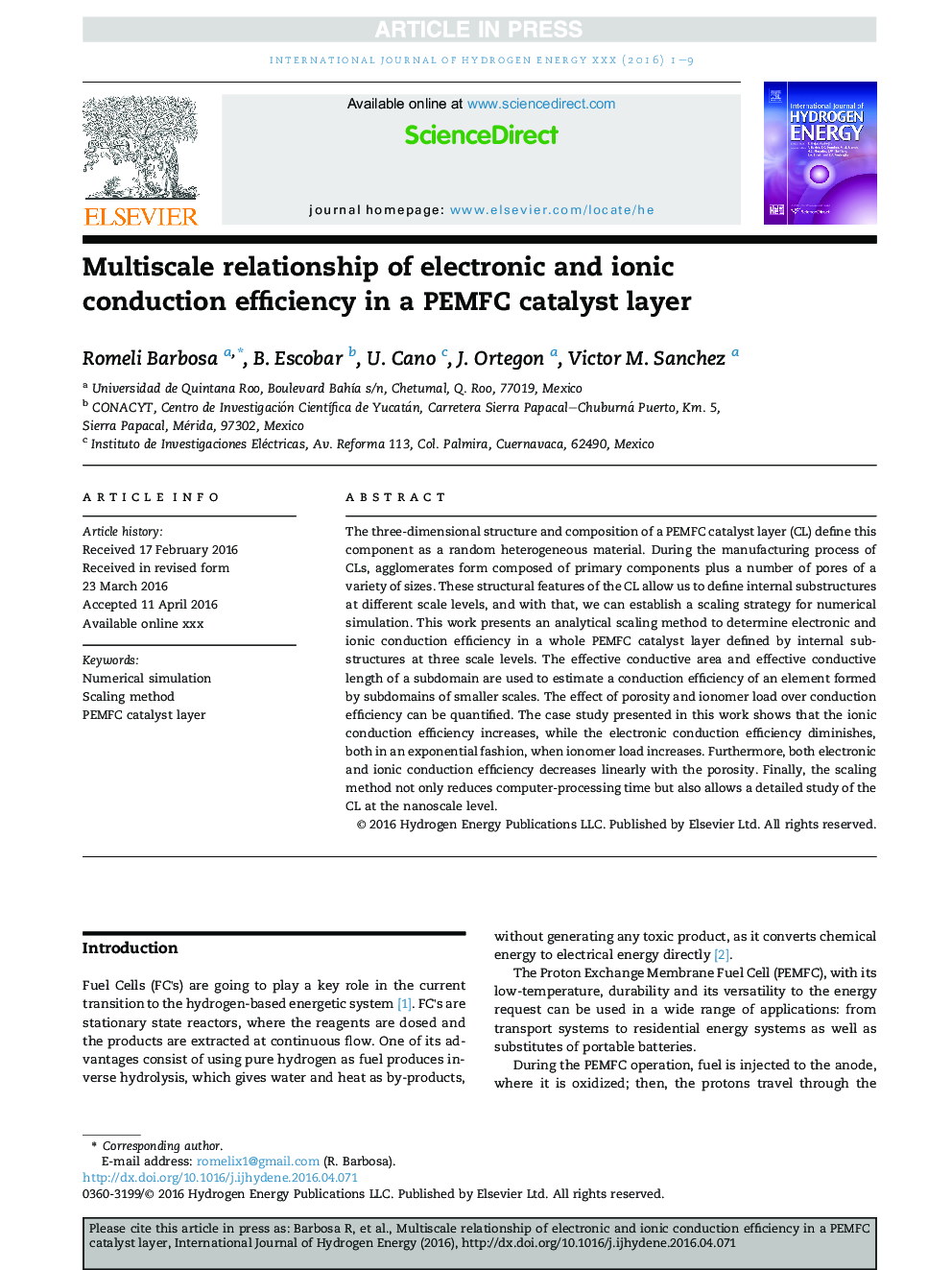| Article ID | Journal | Published Year | Pages | File Type |
|---|---|---|---|---|
| 5147190 | International Journal of Hydrogen Energy | 2016 | 9 Pages |
Abstract
The three-dimensional structure and composition of a PEMFC catalyst layer (CL) define this component as a random heterogeneous material. During the manufacturing process of CLs, agglomerates form composed of primary components plus a number of pores of a variety of sizes. These structural features of the CL allow us to define internal substructures at different scale levels, and with that, we can establish a scaling strategy for numerical simulation. This work presents an analytical scaling method to determine electronic and ionic conduction efficiency in a whole PEMFC catalyst layer defined by internal substructures at three scale levels. The effective conductive area and effective conductive length of a subdomain are used to estimate a conduction efficiency of an element formed by subdomains of smaller scales. The effect of porosity and ionomer load over conduction efficiency can be quantified. The case study presented in this work shows that the ionic conduction efficiency increases, while the electronic conduction efficiency diminishes, both in an exponential fashion, when ionomer load increases. Furthermore, both electronic and ionic conduction efficiency decreases linearly with the porosity. Finally, the scaling method not only reduces computer-processing time but also allows a detailed study of the CL at the nanoscale level.
Keywords
Related Topics
Physical Sciences and Engineering
Chemistry
Electrochemistry
Authors
Romeli Barbosa, B. Escobar, U. Cano, J. Ortegon, Victor M. Sanchez,
